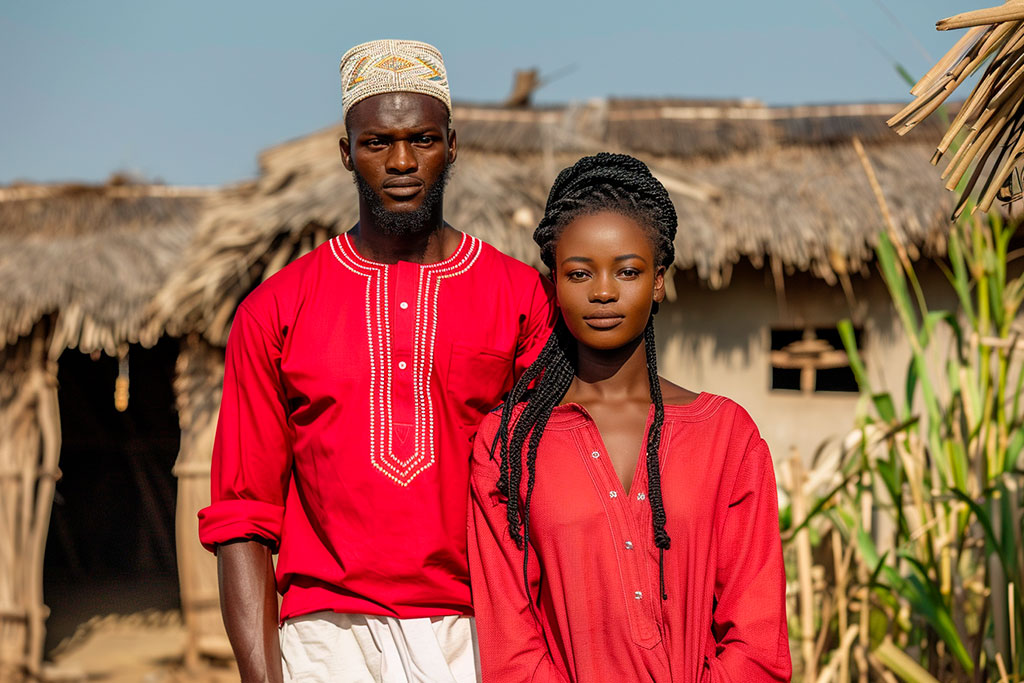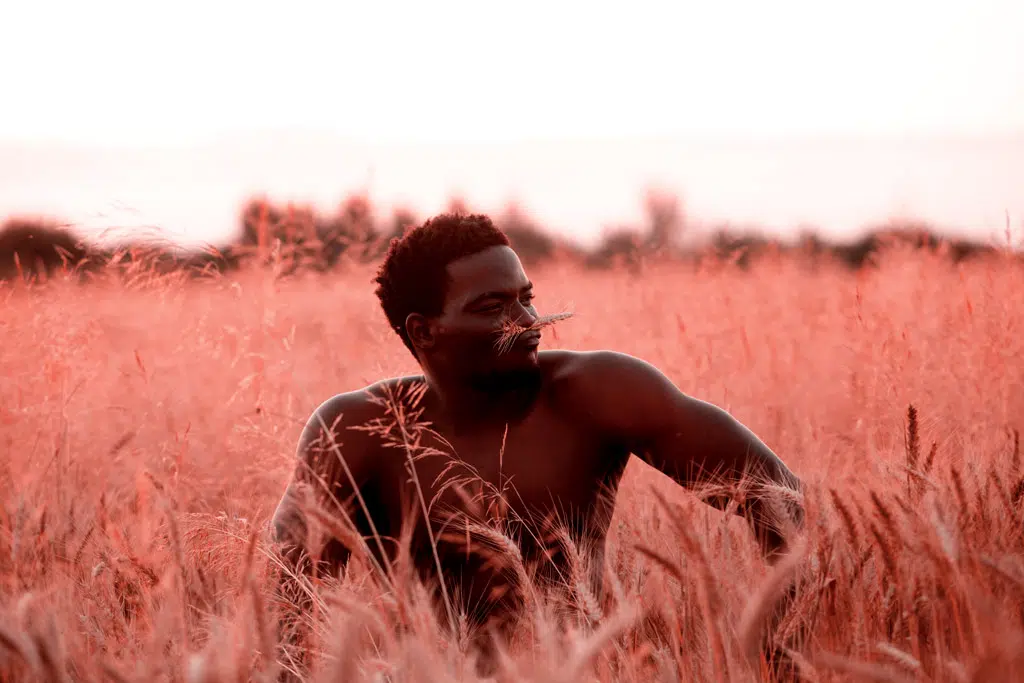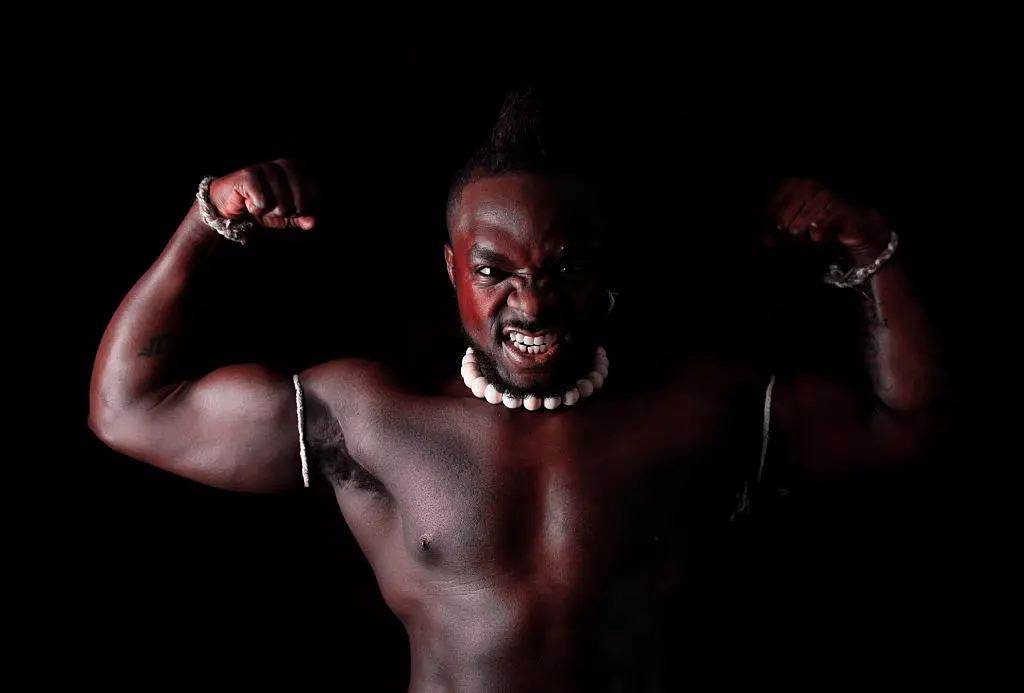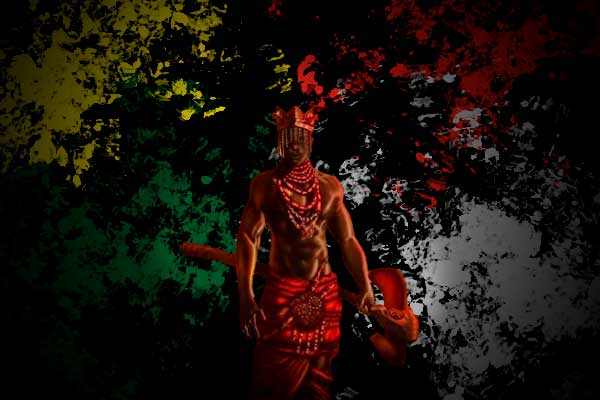Dada: Orisha representing the crown of the Iworos

The Orisha Dada is considered the representation of the crown or the hierarchy held by the iworos or santeros after their consecration. It is closely related to children and the creation of the plant kingdom. It represents the commitment that initiates have to live doing good in a selfless way.
Who is Dada?
This Orisha is known as: Dada Ibañi, Dada Baldone or Obañeñe. The meaning of his name is interpreted by dividing his word: "Da" whose translation from the Yoruba language is: create, and when repeating it is interpreted as a reference to his origin or descent. Throwing the conclusion that the name "Dada" refers to the spirit of vegetation and the process of creation or the power that allows continuous birth within the cycle of life (birth, growth, death and rebirth).
It is clear then that Dada is an Orisha of creation and births, therefore, she is the custodian of newly incarnated or newborn spirits. It is said to especially protect those born with curly hair or a lock of hair, since it represents a characteristic associated with the Orisha.
It is believed that she is the daughter of orisha obatala and his mother is Yembo. She is also considered the sister of Shango, whom she cared for for a long time, so it is said that she was responsible for raising the Orisha, with whom she has a special relationship. Likewise, he has a particular affinity with the Orisha Oya. The oddun with whom he comes into the world (isalaye) is Irete Untendi.
During the creation of the world she was entrusted by her father Obatala to create and populate the vegetable, animal and mineral kingdoms, for this reason she is identified as the Orisha of vegetables.
In some beliefs it is said that Dada is one Orisha and Obañeñe or Ibañi is another. That they are jimaguas brothers and that their foundation, despite being delivered together, carries a secret for each one. Others consider it to be the same Orisha.
Characteristics of this Orisha
Dada is an Orisha that symbolizes the treasure of the iworo, that is why it represents its crown, which is the most valuable thing that an initiate can have, the consecration of his Ori.
Dada's number is 4 and all its multiples. Your day It is Sunday and its allegorical celebration inherited from syncretism is usually celebrated on August 31, since, on that date, the day of the Catholic saint San Ramón Nonato is also commemorated.
Receptacle or Soup Tureen
It is usually a casserole, or pumpkin carefully decorated with beads and snails, topped with a ball of indigo. In other religious houses they usually use as a receptacle for this Orisha a gourd that will be exactly equal to the size of the initiate's head, being covered with snails, red and white beads, gold, silver and African parrot feathers. He lives on Chango's pan.
In the houses that provide the foundation of Dada and Ibañi separately, a gourd lined in cloth embroidered with snails in the shape of a spiral is made in the same way, to which 16 strips of red and white beads hang. This foundation is placed on a small wooden pylon that contains the secret of Obañeñe or Ibañi.
Dada Colors
Its color is the red and white, your elekes or necklaces They are made with beads of those colors.
He does not have a specific dance, although he does have songs in his honor. He does not get on any saint's horse. Through the diloggún it is manifested by the signs Ogunda tonti Osa (3-9) and Eyila Shebora (12).
History: Dada raised Shango
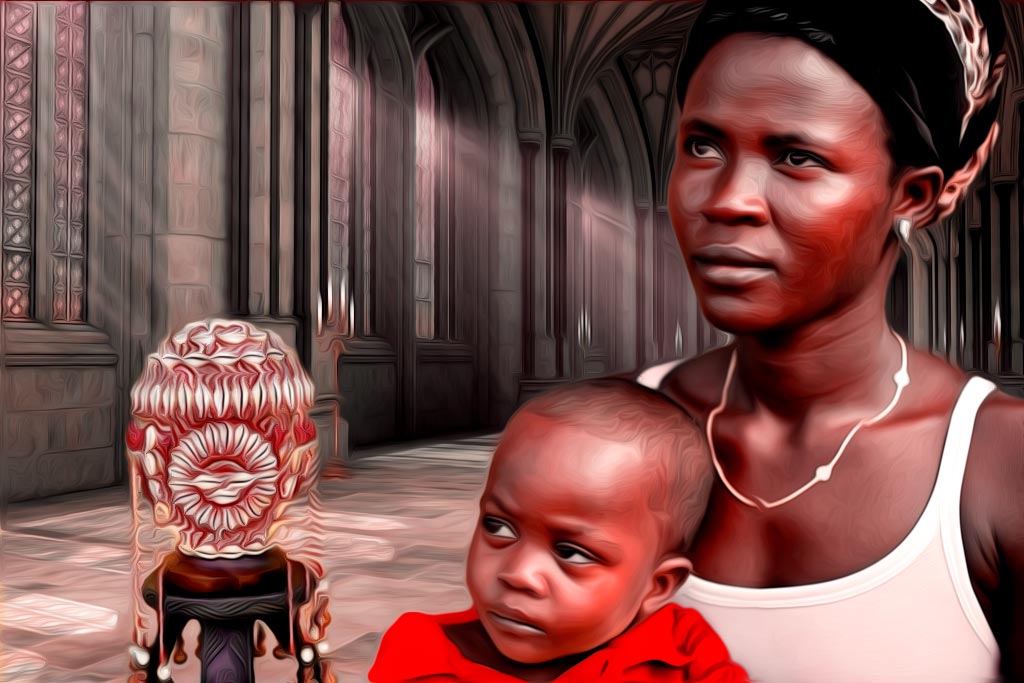
It happened that after the birth of Orisha Shango, who came to the world through the work and grace of Olofin and Olodumare, was immediately recognized by Olofin as his son, who immediately decided that he would entrust the Orisha Dada Obañeñe with his upbringing.
Olofin proceeded to deliver everything necessary for the development and maintenance of Chango. In this way Shango grew up, always counting on the care and advice of Olofin, who constantly transmitted his teachings to him and gave him all his secrets, because he was very happy to have a child on earth.
Olofin maintained a constant routine visiting his son every 6 months. In this way, he was present in the evolution of his life. When Shango became a man, he left Dada's house. At the time of Olofin's visit, he was surprised that his son was not there, which caused him great concern and despair.
Olofin decided to go to orunmila, who made him Osode (consultation) and saw the sign Odi Bara, recommending that he make certain sacrifices. Olofin made them and immediately announced that he would grant a grace or award to the person who will find his son Shango.
It happened that Orishaoko, a farmer who worked the land, was in the field, doing his work while singing: "yenibo misesere yenibo miserere." When suddenly, from the bowels of the earth, a voice came out that answered his song. Orishaoko, surprised to hear that, pressed the plow with all her might and a man came out of one of the stones that were there and immediately turned to stone again.
In view of such an event, Orishaoko took the stone and put it in her pocket. After the end of his day, he decided to go to where Olofin was, to tell him what had happened to him while he was working the land. When Olofin heard him, he jumped with joy and excitement, asking him to give him the stone he had found, because he knew it was an odu ara, and that it was his own son Shango, whom he had been looking for.
Orishaoko gave the stone to Olofin who blessed him enormously, granting him the grace he had offered, stating: "From this moment on, you will be the King of the earth forever and a faithful friend of my son Shango." This is the reason why, it is placed on the foundation of Orisha oko a tile painted white and red in allegory of Chango and the virtue that was granted to him thanks to what happened in this story.
Children of this deity
The children of the Orisha Dada Ibañi, are usually very kind, given to the paternal tasks, but with a quite strong character. They have a certain aura of mystery that makes them attractive. His daughters can become very loving and even self-sacrificing women.
How is Dada consecrated or received in Santeria?
It is necessary to emphasize that Dada does not go to the head of any initiate, that is, it does not crown itself. It also has no roads. Dada's sons usually crown Chango or in some cases Obatala can also be consecrated to them.
The iworos in general usually receive it when they have in ita imale the signs: iroso tonti iroso (4-4) or any of its omolú, or the letter Eyila Shebora (12) in the Orishas: Elegua, Obatalá or in the guardian angel , or when it is recommended directly through Osode (consultation).
The way to consecrate this Orisha may vary according to customs. There are currents that only deliver the crown; others deliver the crown with a secret; there are some who base the crown, the pylon and place an odu ará, among other things. Finally, the recipient does not know for sure how it was made because when the moment of consecration has arrived, the foundation is already loaded.
Another curious fact about the consecration of this Orisha is that according to customs, different sacrifices can be sacrificed to her. Some offer him chickens, pigeons and white guineas; others sacrifice white roosters, pigeons and guineas; and others give him chickens of any color, pigeons and guineas.
Why is it received?
The foundation of Dada is received to secure our stay on earth after having been consecrated in Kariosha. He is also an Orisha who comes to influence the connection of the initiate with his destiny, thus balancing the physical and spiritual energies to more effectively achieve the success of life.
What is asked of Dada?
- It is requested for the protection of children and pregnant women, especially in cases where deliveries may present some type of complications.
- Your intervention is requested in the processes in which we are making efforts that we hope will bring positive results or that imply the search for prosperity and economic stability.
- Your help is requested so that there is no lack of food on the iworos table.
- He is entrusted with the protection of midwives and all medical professionals involved in the birth process.
How to attend Dada?
This Orisha can be offered as adimuses all kinds of dishes made with beans (grains) and vegetables. He is also entertained with all fruits, flowers, and candles.
The same animals that Shango likes are sacrificed to him, and also: pigeons, and guineas.
Prayer
Dada má sun kún mó, fún mi l'owo. Roast.
Translation: Dada doesn't cry, it makes me rich. Asé.
Song
Akuon: Dada omolowo my dada omolube eyo.
Chorus: Dada omolowo my dada omolube eyo.
Akuon: I was Dada.
Chorus: masokuma.
Akuon: Okuni Given.
Chorus: masokuma, ero adashe belona fumi la oka queen of masokuma.
Herbs
In Dada's consecration rituals, the same herbs as Shango are used: acana, avocado, poplar, camphor, carob, almacigo, baria, carey bejuco, red bejuco, turluga bejuco, bija, cabima, cairel, cajuela, calalú, camagua, candelilla, canutillo, choir cane, sugar cane, mahogany, caramboli, cedar, combustera cimarrona, cordoban, cuabari or ambia, cupido la una, framboyan, frijolillo, geranium, granada, granadillo, grenguere, red macaw, white guano, guano prieto , jocuma, júcaro bravo, jurubana or jurabainca, laurel, mamey, cashew, miraguano, ox eye, palo amargo, palo bomba, palo bronco, palo caballero, stick hookah, stick box, stick pig, stick jicotea, stick breaks bones, paradise, pine, piñón de botija, piscuala, pitahaya, platanillo de cuba, banana, ponosó, okra, breaks saraguey, rue, siguaraya, tibisí, tomato, travesera, vagabuey, yaba, yarey, yaya, jicotea grass, sarsaparilla.
Given in the Catholic Religion (syncretism)
The Orisha Dada is usually syncretized with respect to the Catholic religion with San Ramón Nonnato and with Nuestra Señora del Rosario. The relationship with San Ramón is very evident, despite the fact that he is a male saint. The story tells that Ramón was born after the death of his mother, that is why he was called Nonnato, which means "not born." He was a faithful devotee of Christian teachings, a preacher on the African continent and a martyr. Like Dada, he is the patron of births, childbirth, children, pregnant women and falsely accused, characteristics for which it is logical that he was syncretized with the Orisha. In addition, in his images, San Ramón usually appears wearing clothes with the colors red and white and with three crowns, symbols that also identify Dada.
Another Catholic spirituality with which Dada is syncretized is with Our Lady of the Rosary or Virgin of the Rosary, who represents a Marian invocation widely venerated by the Catholic Church, representative of motherhood and protection inspired by maternal love, characteristic also to the end with Dada.
Work with Dada for pregnant women:
9 dishes are prepared with balls of different grains, they are placed in front of Dada giving him knowledge of what is being done and cleaning the belly of the person concerned with all the adimuses. Then, two white candles are lit and when it is finished consuming all the dishes are taken to the mountain, giving thanks to mother earth and asking for her blessing so that the birth of that being that is being gestated is successful.
Dada phrases
Dada says: "Don't worry my son, as long as you count on me there will always be food on your table."
Dada says: "There is no hat in the world that can dull the brilliance of your crown."
